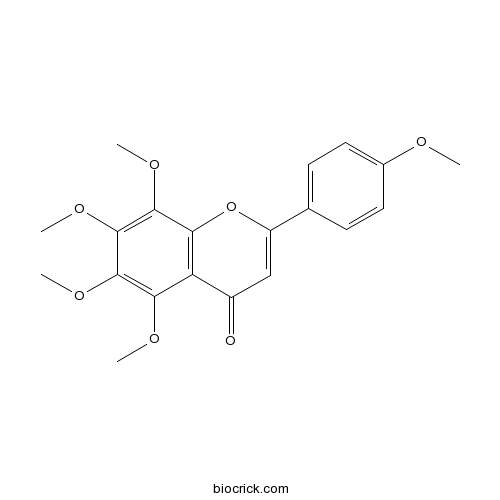Gymnotheca chinensis
Gymnotheca chinensis
1. The products in our compound library are selected from thousands of unique natural products; 2. It has the characteristics of diverse structure, diverse sources and wide coverage of activities; 3. Provide information on the activity of products from major journals, patents and research reports around the world, providing theoretical direction and research basis for further research and screening; 4. Free combination according to the type, source, target and disease of natural product; 5. The compound powder is placed in a covered tube and then discharged into a 10 x 10 cryostat; 6. Transport in ice pack or dry ice pack. Please store it at -20 °C as soon as possible after receiving the product, and use it as soon as possible after opening.
Natural products/compounds from Gymnotheca chinensis
- Cat.No. Product Name CAS Number COA
-
BCN2386
Tangeretin481-53-8
Instructions

Three new oxazoline alkaloids from Gymnotheca chinensis.[Pubmed: 26949983]
Three novel oxazoline alkaloids, 1-oxa-3-azaspiro [4.5] dec-2-ene-8-one (1), 1-oxa-3-azaspiro [4.5] dec-2, 6-diene-8-one (2), and 1-oxa-3-azaspiro [4.5] dec-10-methoxy-2, 6-diene-8-one (3) were isolated from the methanol extract of the whole plant of Gymnotheca chinensis. The chemical structures were established by means of spectroscopic analysis including one- and two-dimensional NMR spectroscopy.
Strategy to rapidly discriminate trace isomeric lignan compounds from Gymnotheca chinensis by probe electrospray ionization tandem mass spectrometry.[Pubmed: 25906033]
Probe electrospray ionization (PESI) is a recently developed ionization technique based on electrospray ionization (ESI) that generates electrospray from the tip of a solid needle. High tolerance to salts, requirements of a trace amount of sample and direct ambient sampling- are major advantages of PESI compared with conventional ESI. In this report, three pairs of isomeric lignans bearing tetra-hydrofuran with variable conformations from Gymnotheca chinensis were investigated by probe electrospray tandem mass spectrometry (PESI-MS/MS) in the positive ion mode. The diagnostic characteristics of these compounds were obtained and the isomers could be successfully distinguished by comparison with their breakdown curves, even though the isomers differed only in the conformation of some groups of the isomer pairs. This report provides a rapid and reliable method for the identification of trace amounts of isomeric lignans by PESI-MS/MS. Furthermore, application of PESI and breakdown curves should have value in mass spectrometry studies of isomeric natural products compounds.
[Identification characters of leaf morphological and venation pattern of Houttuynia cordata with its confused herb Gymnotheca chinensis].[Pubmed: 23627085]
To study the identification characters of Houttuynia cordata and its confused herb Gymnotheca chinensis and establish an identification method.
Gymnothelignans A-O: conformation and absolute configuration analyses of lignans bearing tetrahydrofuran from Gymnotheca chinensis.[Pubmed: 22946788]
Fifteen new lignans, gymnothelignans A-O (1-15), bearing tetrahydrofuran with variable conformations belonging to three potentially related skeletons were isolated from Gymnotheca chinensis Decne. The structures were elucidated by means of detailed spectroscopic analysis. Absolute configurations were assigned using X-ray single-crystal diffraction and chemical transformations. Moreover, by the homology, compounds 1-11 and eupomatilones were confirmed to have uniform R-configuration at C-5. However, a synthesized congener has long been mistaken as 5-epimer of eupomatilone-6. This work provides guidance for the absolute configuration establishment of the subeupomatilone family with trans-H-4-H-5 configuration.


